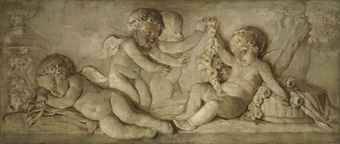
Amorini is an Italian term used to describe paintings and carvings of cupids for decoration purposes. Can be found mostly in the Baroque style. (Mi)

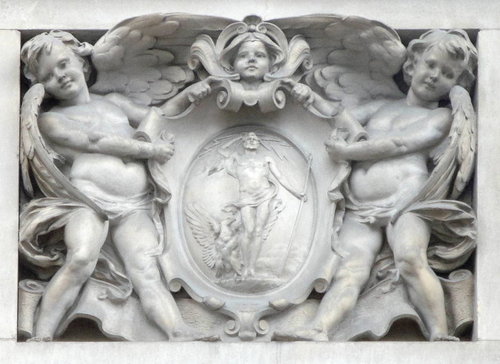
Images Via Google

Amorini is an Italian term used to describe paintings and carvings of cupids for decoration purposes. Can be found mostly in the Baroque style. (Mi)


Images Via Google

The Federal style and the Empire style in America overlapped since the Empire style didn’t necessarily replace the Federal. What the Empire style forced upon the style of furniture was heavy architectural details as a symbol of decline of pure line. Furniture legs became thick, curved and heavily ornamented. American Empire style furniture took the appearance of Grecian style as the Federal styled homes were developing a Greek Revival style.
Duncan Phyfe (1768-1854) is a notable cabinet maker of the Empire Period. (Mi)
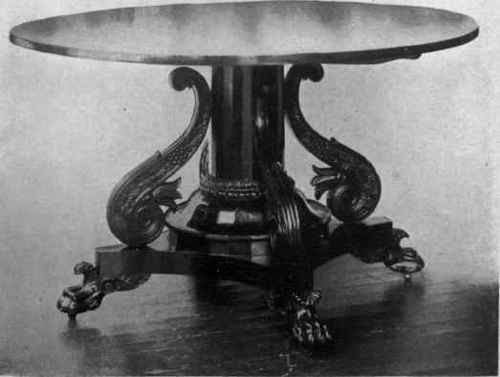
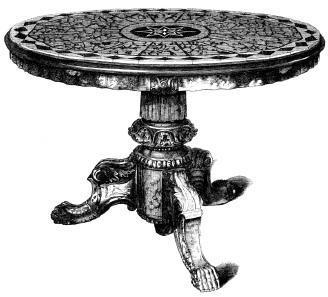
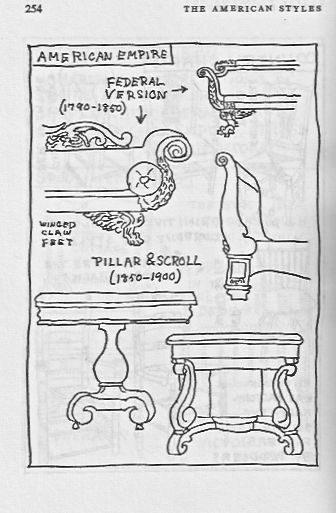
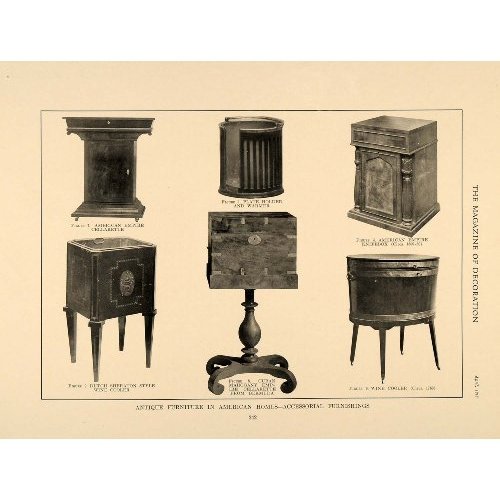
Cellarette
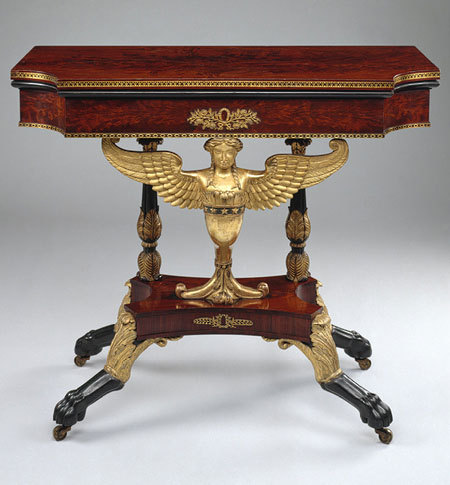
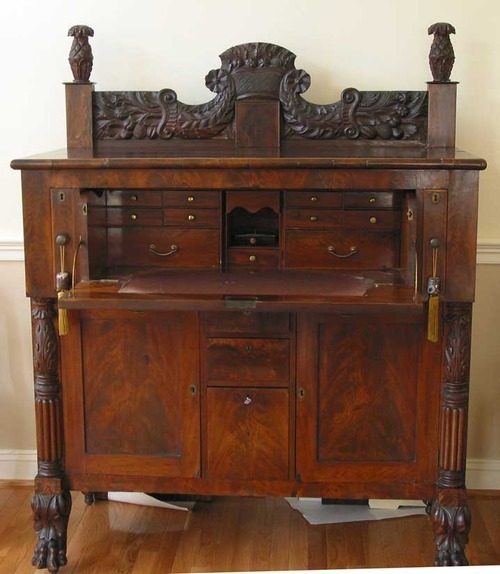
Images Via Google
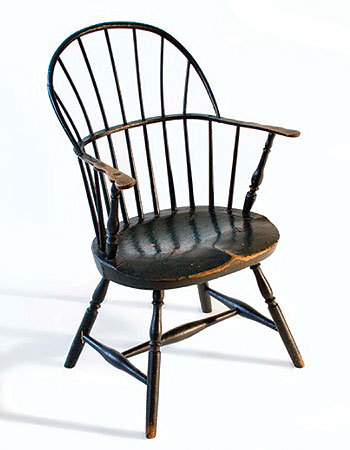
Bow-Back Windsor Chair
The country styles of the Colonial furniture in America, had a more functional approach to creating furniture compared to the styles found in the cities. The Windsor chair is the best example for this statement, with its different variations. The furniture made from maple, pine, oak, apple of cherry wood showed the dependence of the country people to the resources at hand. The American country furniture such as rocking chairs, short bed posts, ladder back chairs, etc., can be claimed as ‘uniquely American.’ (Mi)
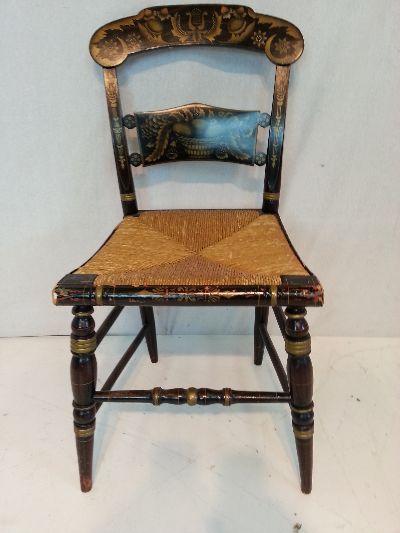
Hitchcock Chair
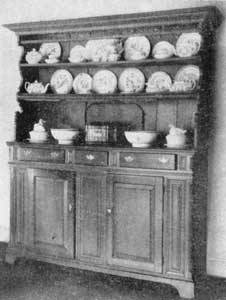
Pine Dresser
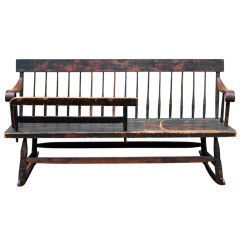
Rocking Settee
Images Via Google
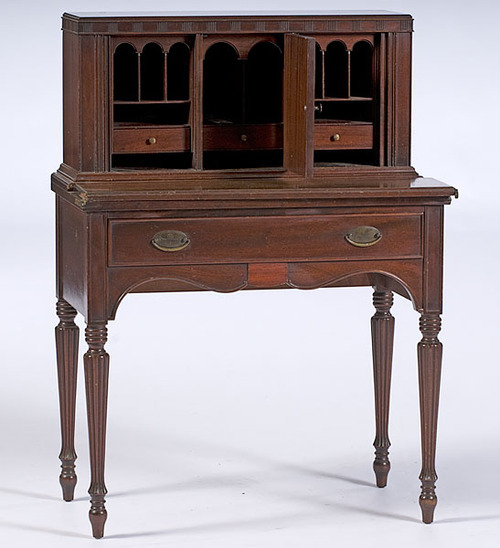
Tambour Desk
With the Revolution came the end of the Colonial period and thus began the Federal period. After the war ended, the English influenced was used enough to give way to other styles, namely the French with Influences from Italian. The import of Furniture made by English cabinet makers became a violation of national pride for Americans, however they followed the Sheraton and Hepplewhite styles, popular in England, very closely. The new style developed showed the confidence of the new republic and the style became more traditional and the American eagle became a frequently used motif in the decorations.
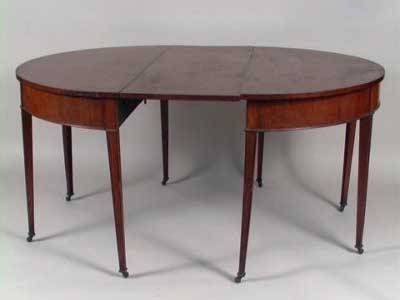
Extension Table
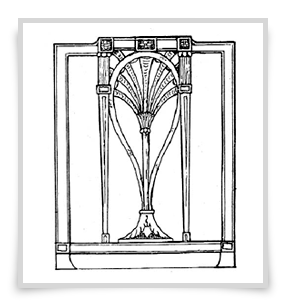
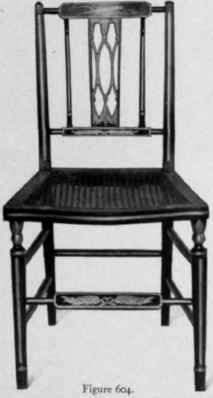
American Sheraton Back and Chair
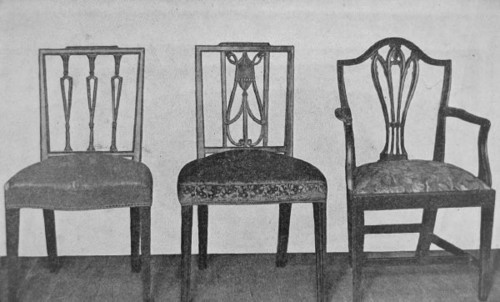
Chairs
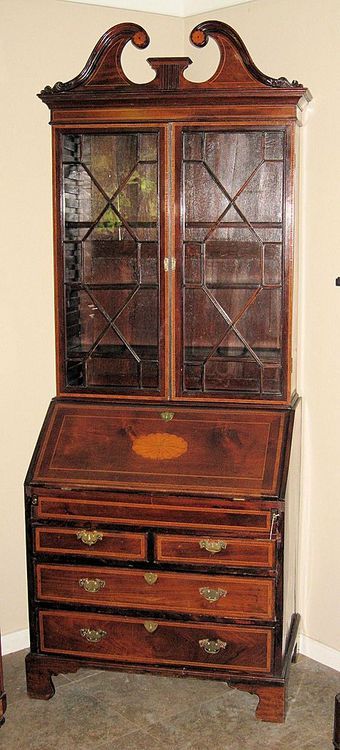
Cabinet
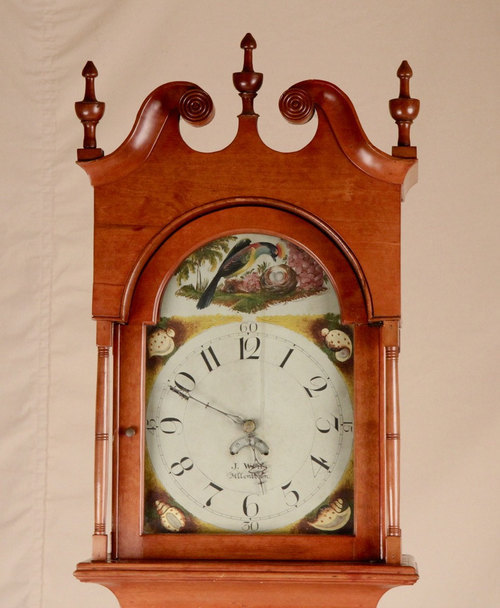
Clock
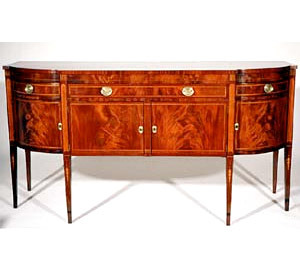
Sideboard
Images Via Google
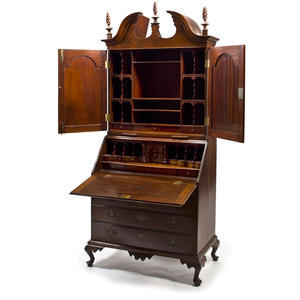
Secretary
In the 18th century, though the use of walnut wood continued, mahogany became the widely used wood in furnitures. The Rococo style influence became visible within the designs and the acquired wealth allowed the development in the Colonial furniture style. As to add refinement to the style, the legs of furniture consisted of cabriole legs with animal legs or shell carvings. By 1750 there was a distinct style of cabinet making and the furniture were comparable with those of the better English work. In America, they had developed individual styles, with architectural details. (Mi)
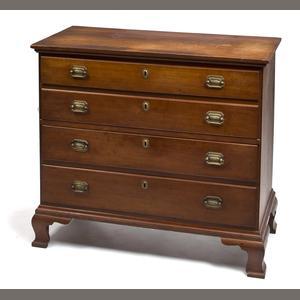
Chest
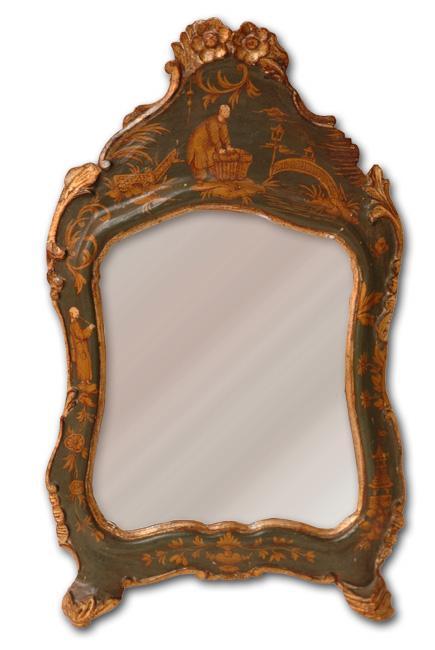
Mirror
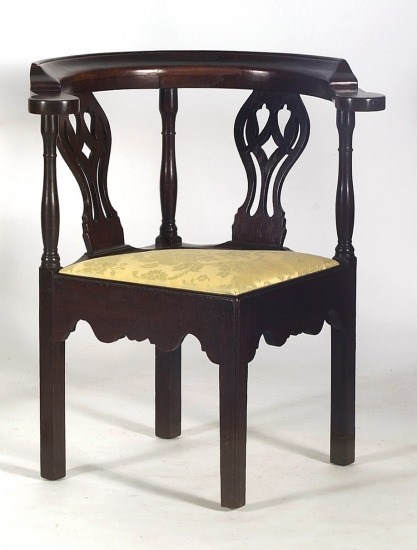
Chair
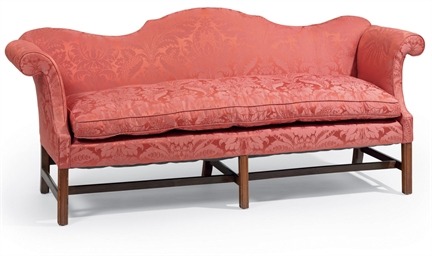
The Camelback Sofa
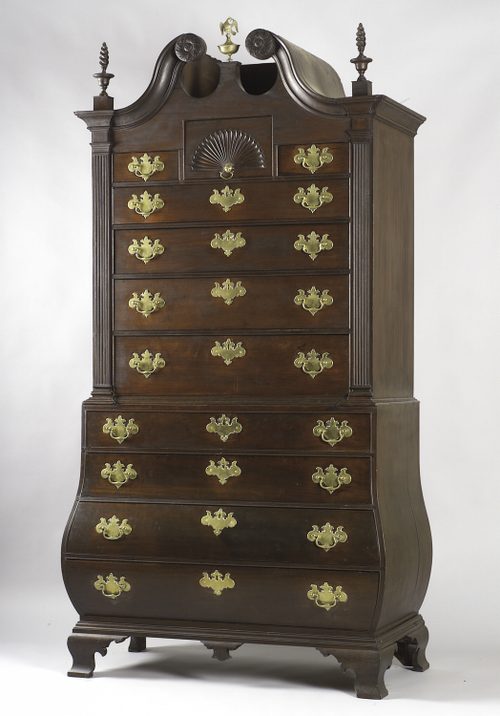
Chest on Chest

Tall Clock
Images Via Google

The New England colonists were inhabited by a middle class group who caused the Civil War in England based on their religious views and left their homeland after the death of queen Elizabeth. Their new built homes and furniture resembled the Gothic-Tudor tradition, excluding the decorative aspects of the style due to religious beliefs, lack of funds and materials, and possibly a lack of skill. Over all, they simplified the designs and decorations of their home countries. The furniture of the New England colonies had the characteristics of the English Jacobean. The chairs resembling the Gothic style; The cupboards and chest had a rectangular shape; and tables were the drop-leaf type with a boxed style. The materials used for furniture were those easily found and easy to work with such as: Pine, oak, maple and birch. The wood was usually used raw. The coloring and polishing was done by ‘simple friction’ and ‘natural darkening’.
The Southern colonies however, were inhabited by a wealthier group. Their style was a more refined and decorated English Jacobean compared to those of the New England colonies and in fact they imported more English furniture than the latter.
In the colonies where the Germans and the Swiss had settled, the Medieval European style furniture appears with a visible peasant skill and handiwork, with resemblance to the Germanic peasant decoration. Those closest to the coast began to advance their furniture style closer to those in Europe and wealthy houses, stored refined furniture. With the communications and exchanges in Europe, the styles began to develop rapidly based on the influence of styles such as the French version of the Italian Baroque as well as style of Holland, Spain and China.
The American Furniture style of the late 17th century is mostly identified by the use of walnut wood in furniture as well as the appearance of chests, Upholstery of chairs, highboys, etc continuing into the 18th century. The motifs of the early 18th century used in American furniture were imported from English Restoration and of continental styles. (Mi)
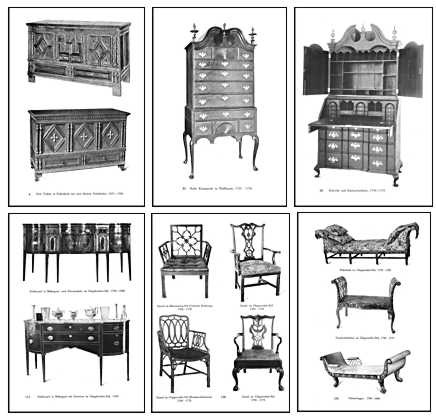

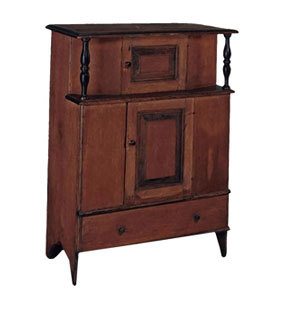
Cupboards
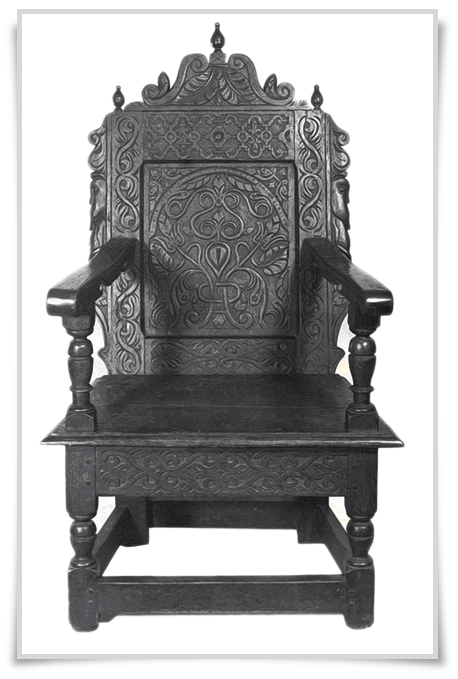
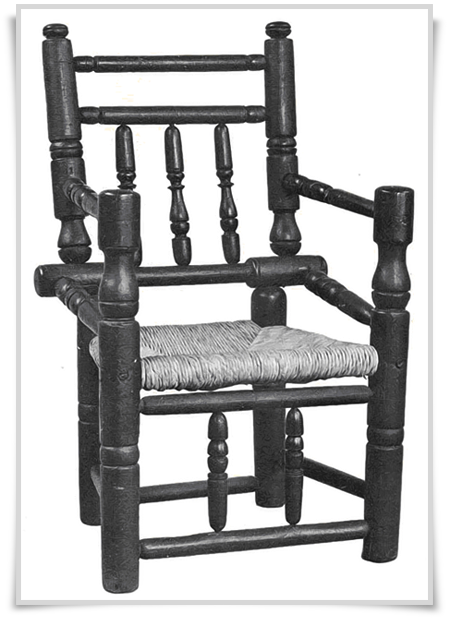
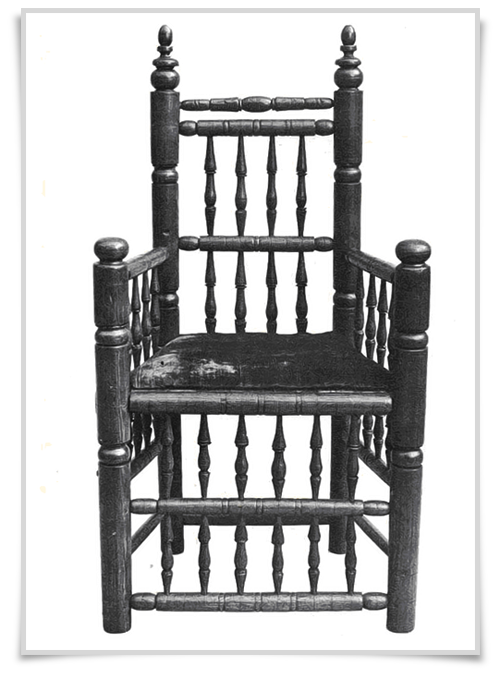
Chairs

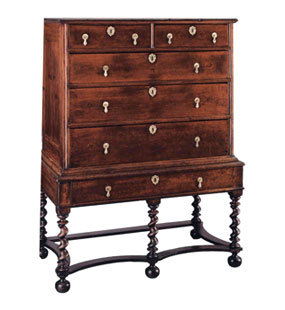
Highboys
Images Via Colonial Furniture /Google
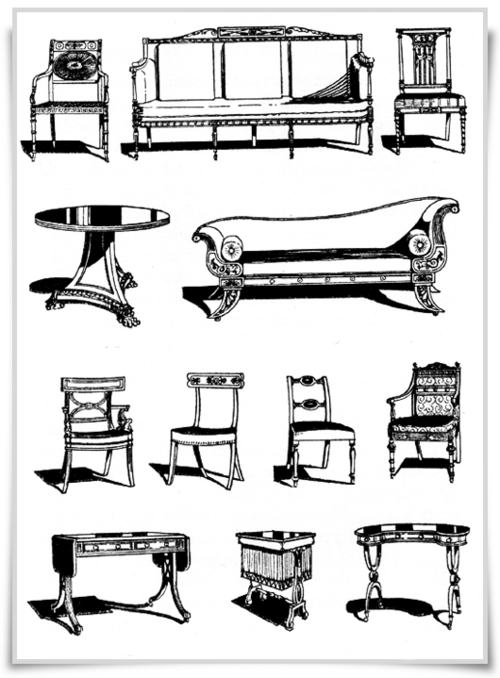
The furniture of early America stems from the furniture of many cultures, countries and periods instead of being of a single consistent style. Each colony; The English, French, Spanish, Sweden and German, imported their style of furniture upon arrival. Due to the lack of intercommunication within the colonies, the only communication came from the mother lands which changed each style with a slow pace. Overall the basics of the Colonial American Furniture is a ‘laggard’ imitation of simpler European styles. (Mi)
Click to read more: (Articles and Links to be provided soon)
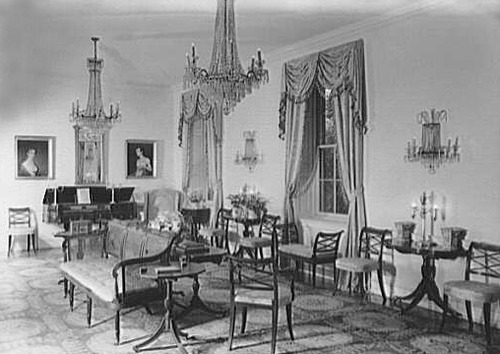
Images via Google

Ambulante is a portable table for serving tea used since the 18th century, period of Louis XV in France. (Mi)

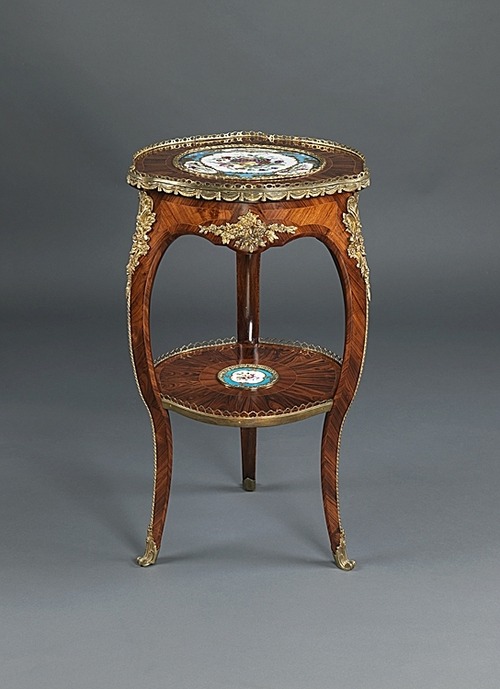
Images Via Google
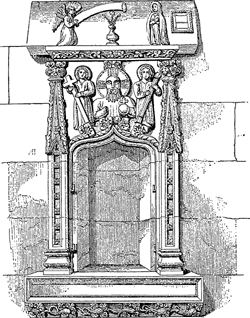
(AKA Almery; Almonry): In architecture, Ambry refers to a recess wall in church, used for storage. It can be arched or square shaped and can have attached doors which gives it a cupboard-like look and function.
The term can also refers to a cabinet attached to the wall, storing items for the use of the priest such as chalices. (Mi)
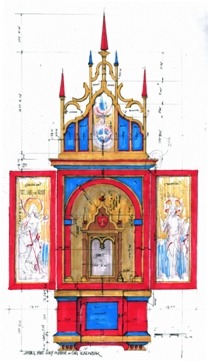

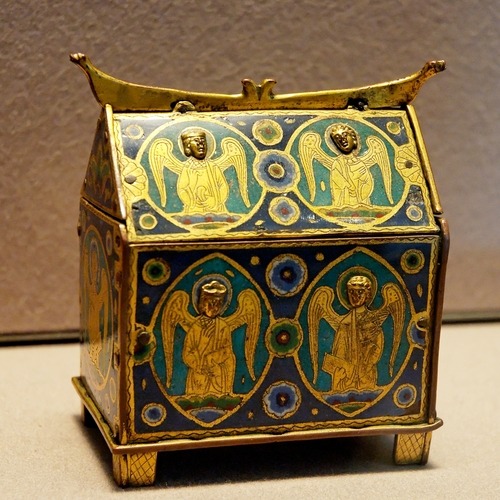
Images Via Google
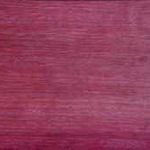
(AKA Violetwood/Purpleheart) is a purplish wood which has been used for veneering since the 18th century. (Mi)
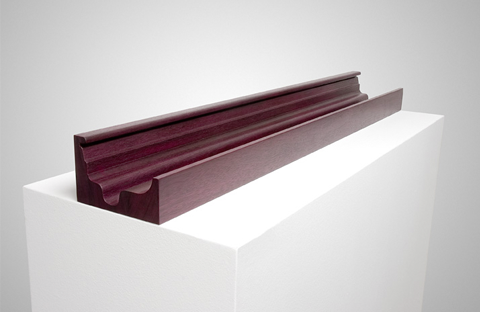
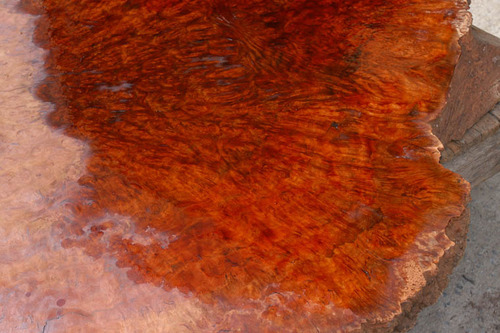
Amboyna is an East Indian wood, has light reddish-brown burls, and is used as a veneer and inlay in furniture since the Roman times. (Mi)
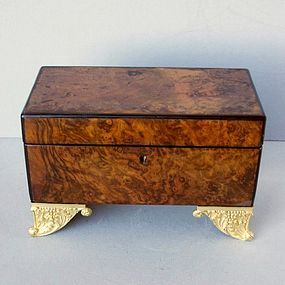

Images Via Google